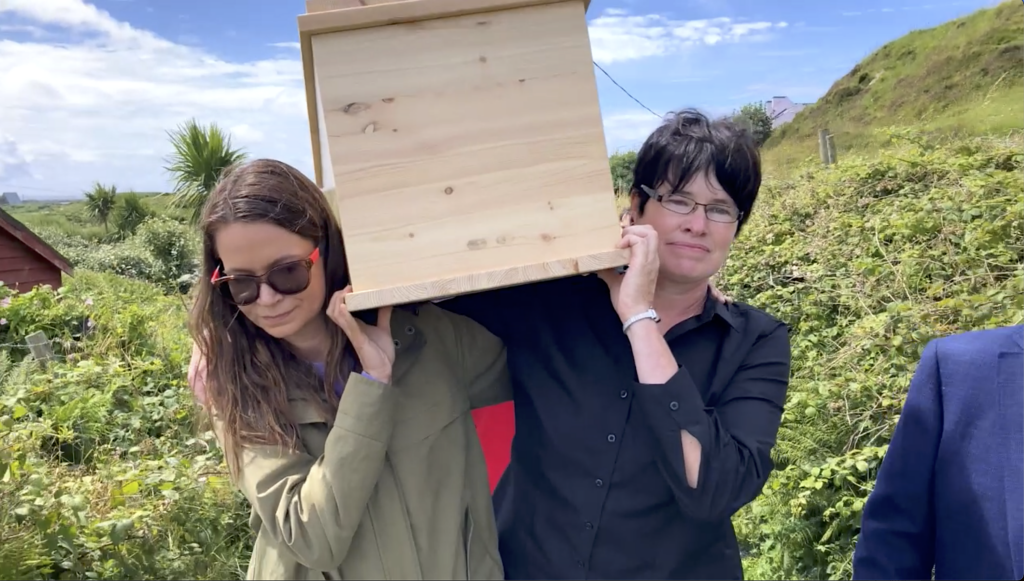
9/10/2024 @ 21:30
Iarsmaí features the closing stages of a long campaign to persuade the School of Medicine in Trinity College Dublin (TCD) to return for burial the remains of thirteen individuals stolen from the island in 1890. Marie Coyne (Inishbofin Heritage Museum) and Ciarán Walsh (curator.ie) had worked on this project since 2012 and this part of the campaign ended on 16 July 2023 when Coyne brought the remains back to the island.
That was not the end of the story.
The Inishbofin remains were part of a collection of 24 skulls that Haddon and Dixon stole in a grave robbing spree that started in Inishbofin in July 1890 and ended in St Finian’s Bay in Kerry in August 1890. Haddon recorded the theft of the Inishbofin skulls in detail, but he was a sporadic journalist at best and he abandoned his journal before he reached St Finian’s monastery.
However, numerous other records proved that these remains were part of the same haul, which Haddon gifted to the Anatomy Dept in TCD in 1892. The School of Medicine set up the Old Anatomy Museum Working Group to develop the site after the department moved to a new premises in 2014. This group steadfastly refused to engage with the idea of repatriation and used the lack of a journal entry to exclude the remains of eleven individuals from any decision on the repatriation of the collection.
Documents released to Ken Foxe in response to an FOI request reveal how the Old Anatomy Museum Working Group forced the independent Trinity Colonial Legacies project to compromise on this issue. The university further sidelined this project when it formally constituted the Trinity Legacies Review Working Group to implement the terms of that deal. In effect, the internal politics of the university trumped the will to decolonise its campus as college managers attempted to kill repatriation with kindness.
That is the background to the story that Iarmaí tells as part of a wider investigation of how museums and institutions are struggling to respond to demands for the repatriation of looted material, while seeking a way to retain collections that are obviously tainted by colonialism. In the background a government appointed committee is examining the legislative vacuum in which collections that pre-date the foundation of the Irish state exist.
Despite a commitment to include communities of origin in the process, Coyne was excluded while collection management staff from national institutions, academics from TCD and even a representative from the commercial gallery sector were appointed. Sure, that is the way the civil service populate these committees. More alarming still is a determined shift from “communities of origin” to “claimant communities” under the watch of a minister from the Green Party.
So, Iarsmaí is in part a story about a compromise that encapsulates the dilemma faced by colonial era institutions dealing with popular demands for the decolonisation of public spaces under the banner of a resurgent Black Lives Matter Movement. Iarsmaí captures the thrill of that moment well. The untold story is the retention of the other half of the Haddon Dixon Collection by the school of Medicine TCD. That underscores a storyline that moves from an unprecedented public reaction to structural racism to an equivocal commitment to repatriation and a wrenchingly sincere discussion amongst curators about the ethical retention of looted material and stolen skulls, while the final sequence of a funeral on Inishbofin makes a dignified case for the unequivocal resolution of colonial legacies.
Watch the trailer: https://youtu.be/5sWGxonJU7U?si=BeP1UgfG2geBRbty

